Wood Stove Fire Bricks Guide: Efficiency & Safety Tips
- November 3, 2023
- 1 comment
When it comes to operating a wood stove, one of the most significant components that ensure its efficiency and durability is the fire brick. These specialized bricks are not just a mere layer within the stove; they play a pivotal role in heat retention, emission, and protection of the stove’s structure. This article explores the intricacies of fire bricks and their indispensable use in wood stoves.
What Are Fire Bricks?
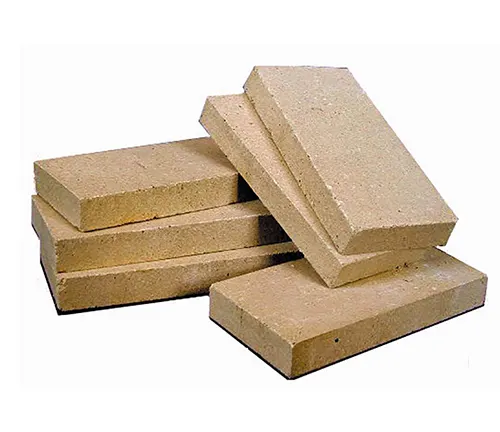
Fire bricks, also known as refractory bricks, are a type of ceramic brick designed to endure extremely high temperatures. Their primary role is to line kilns, furnaces, and, notably, wood stoves, where they safeguard the metal body from direct flame exposure. These bricks are crafted from refractory ceramic materials like silica, alumina, and magnesia, which are capable of withstanding temperatures of up to 1800°C, far beyond what a typical wood stove generates.
The dimensions of a firebrick can vary depending on the specific application and manufacturer. However, a common size for a standard full firebrick in the United States is approximately 9 inches long, 4.5 inches wide, and 2.5 inches thick. This is often referred to as a “9×4.5×2.5” brick. In metric units, this is approximately 229mm long, 114mm wide, and 64mm thick. There are also “splits,” which are half the thickness of standard bricks, typically used when the full brick size is not required, or a lighter application is needed. Additionally, different sizes and shapes may be available for special applications, and manufacturers can often provide customized dimensions for unique requirements.
The Composition of Fire Bricks
At the heart of a fire brick’s ability to endure the searing temperatures of a wood stove is its composition. A carefully calibrated mix of clay and other refractory materials gives fire bricks their heat-defying qualities. Alumina (aluminum oxide) is a common addition that enhances the brick’s ability to tolerate intense heat—bricks with higher alumina content are often used in industrial applications where temperatures are especially extreme.
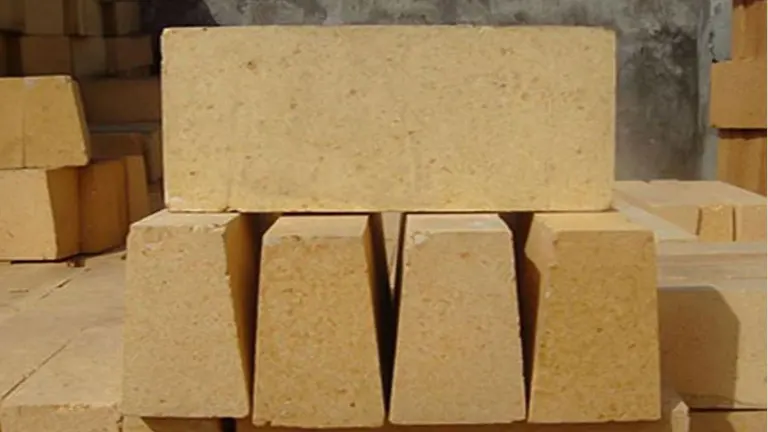
Beyond alumina, other materials may be incorporated to achieve specific characteristics:
- Silica: Increases the brick’s refractoriness, meaning its ability to withstand high temperatures without melting or fusing.
- Fireclays: Are essential for their thermal stability, resisting thermal shock and cracking during rapid temperature changes.
- Binders and Additives: Such as calcium aluminate cement, can be added to improve the brick’s structural integrity at high temperatures.
Manufacturers may tweak these recipes to produce bricks that meet different needs. For instance, some fire bricks offer better insulation, which is useful for the outer layers of a stove to minimize heat loss, while others focus on thermal mass, retaining and radiating heat into the room long after the fire has diminished.
Tailoring Composition to Application
The diversity in fire brick composition means that when choosing bricks for your wood stove, it’s not a one-size-fits-all scenario. You’ll need to consider:
- Temperature Threshold: Opt for bricks that can handle your stove’s maximum operating temperature. Residential stoves typically don’t require the high-temperature bricks used in industrial kilns.
- Insulation vs. Heat Retention: Decide whether you need bricks more for insulation or for retaining and radiating heat. Lightweight insulating bricks are excellent for the former, while dense bricks are suited for the latter.
- Regulatory Compliance: Some regions have regulations governing wood stove emissions and efficiency, which might dictate the type of fire bricks you should use.
By understanding the composition of fire bricks and their various applications, you can make an informed decision that ensures the longevity of your wood stove and the safety and comfort of your home.
Why Use Fire Bricks in a Wood Stove?
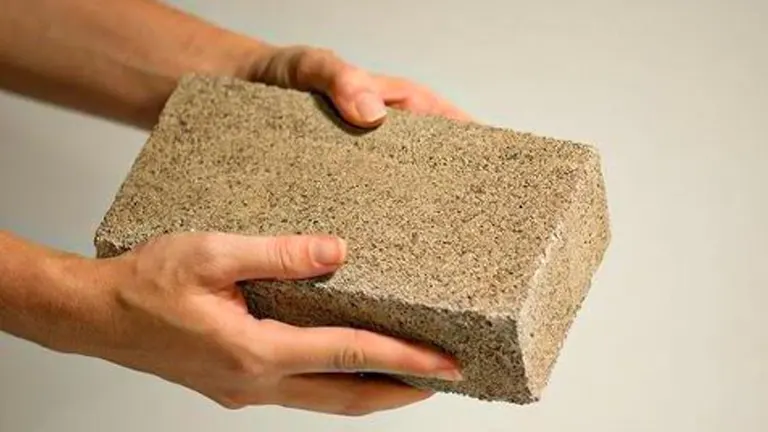
- Heat Management: Fire bricks absorb and reflect the heat generated by the burning wood, leading to a more uniform and prolonged heat distribution. This reflective property ensures that the heat is directed into the living space rather than being absorbed by the stove’s metal, which can cause warping or damage over time.
- Efficiency Improvement: By enhancing the combustion environment, fire bricks contribute to a more complete burn of the wood. This means that the stove operates more efficiently, yielding more heat from less fuel. This efficiency also results in fewer pollutants, as a complete burn reduces the emission of particulate matter and other combustion by-products.
- Protection of the Stove: The bricks act as a protective barrier between the intense heat and the stove’s body. This shield not only prolongs the lifespan of the stove but also prevents the metal from reaching temperatures that could weaken its structural integrity.
- Reduced Creosote Buildup: A wood stove lined with fire bricks maintains a higher combustion chamber temperature, which helps minimize creosote accumulation. Creosote is a flammable substance that can build up in the stove and chimney, presenting a significant fire hazard if not regularly cleaned.
Types of Fire Bricks for Wood Stoves
When selecting fire bricks for a wood stove or any high-temperature application, understanding the differences between standard fire bricks and insulating fire bricks is crucial. Each type has unique properties and uses, so it’s important to choose the right brick for your specific needs.
Standard Fire Bricks
Standard fire bricks, also known as dense fire bricks or hard bricks, are used primarily to build the inner lining of wood stoves, fireplaces, and kilns. They are made from refractory ceramic materials that are dense and have a low porosity. This composition makes them excellent at absorbing and retaining heat, which they can then slowly release over time.
Characteristics of Standard Fire Bricks:
- High thermal mass to absorb and radiate heat.
- Dense and durable, capable of withstanding mechanical abuse.
- Lower insulation properties compared to insulating bricks.
- Better for applications where the direct flame is present and high heat capacity is needed.
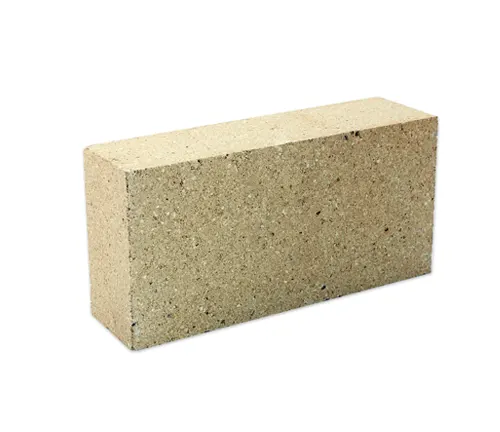
Insulating Fire Bricks
Insulating fire bricks (IFBs) are a type of fire brick that provides high levels of insulation to keep heat from escaping the stove and to protect surrounding structures from high temperatures. They are lighter and more porous than standard fire bricks, which allows them to trap air and provide excellent insulating properties.
Characteristics of Insulating Fire Bricks:
- Low thermal mass, means they do not absorb and hold heat like standard bricks.
- Higher porosity which makes them less durable under direct flame or mechanical stress.
- Excellent insulating properties, used to reduce heat loss and increase efficiency.
- Suitable for the outer layers of stoves, furnaces, or as backup insulation.

Choosing Between Standard and Insulating Fire Bricks
The choice between standard and insulating fire bricks largely depends on the role they will play in your wood stove:
- For the Firebox: Standard fire bricks are typically recommended because they will be in direct contact with the fire. They can withstand the heat without deteriorating quickly.
- For Insulation: Insulating fire bricks are often used in the outer layers of a wood stove or around the firebox to provide insulation, reflecting heat back into the firebox and preventing it from dissipating too quickly.
Considerations for Selection:
- Operating Temperature: Ensure the bricks can withstand the maximum temperature your stove will reach.
- Location Within the Stove: Determine whether you need bricks for structural support or for insulation.
- Weight and Structure: Consider the weight that the structure of your stove can support. Insulating fire bricks are lighter and may be preferred in situations where weight is a concern.
In conclusion, standard fire bricks are best for high-heat areas where the brick will be in direct contact with the fire while insulating fire bricks are ideal for increasing the efficiency of your stove by insulating it. It’s not uncommon to use a combination of both in a wood stove design to optimize both heat retention and insulation.
Are you looking for the perfect Fire Bricks?
If you’re in the market for reliable and durable fire bricks, I highly recommend Rutland Products Fire Bricks based on my extensive experience with them. These bricks are an exceptional choice, whether you’re building a new fireplace, replacing worn-out bricks in a wood or coal stove, or lining a fire pit.
- Quality and Durability: What sets these bricks apart is their intermediate duty capability, making them versatile for various applications. They measure 9″ x 4-1/2″ x 1-1/4″, a size that I’ve found to be ideal for most fixtures. During my use, they’ve shown remarkable durability, withstanding repeated heating cycles without cracking or degrading.
- High-Temperature Resistance: These bricks are rated up to a whopping 2700°F (1480°C). This high-temperature rating is crucial for safety and efficiency, especially in high-heat environments. I’ve used them in both stoves and fireplaces, and they’ve consistently maintained their integrity and performance.
- Ease of Installation and Use: Each box contains six bricks, and their size and weight (24.06 lbs for the box) make them manageable to handle and install. During installation, I appreciated their uniform size, which made for a neat and tidy arrangement.
- Versatile Applications: Beyond traditional uses in stoves and fireplaces, I’ve also utilized these bricks for outdoor fire pits. Their ability to withstand high temperatures makes them perfect for outdoor settings, where they’re exposed to various elements.
- Note on Usage: It’s important to note that these bricks are not intended for direct food contact, a crucial consideration for those looking to use them in cooking applications.
- American Made Quality: Made in the USA, these bricks reflect high manufacturing standards. This aspect was evident in the consistency and quality of the bricks I used.
Installation and Maintenance
Installing Fire Bricks in Your Wood Stove
The installation of fire bricks is a critical step in setting up your wood stove for optimal performance. To begin, ensure that your stove is cool and that you have the correct size and type of bricks for your model. The bricks should be laid down starting from the bottom, creating a flat and stable surface. They should fit snugly against one another, with minimal gaps. If cutting is necessary, use a masonry saw for precision. Remember, an accurate fit is key to preventing excessive heat loss and shielding the stove’s walls from intense heat.
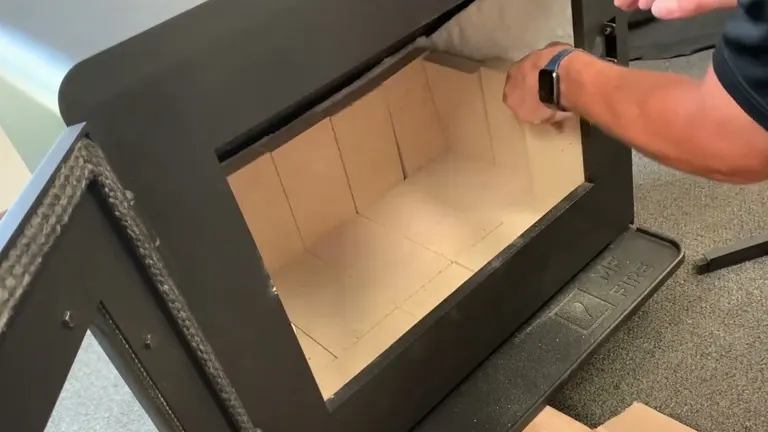
When placing the bricks, make sure that the refractory surface is facing the fire, as this side is designed to withstand direct exposure to flames. For stoves that require bricks on the sides, start from the back corner and work your way to the front to ensure a tight fit. Special attention should be paid to the bricks directly exposed to the highest heat, often at the back of the stove or near the firebox opening.
Maintaining Your Fire Bricks
Routine maintenance is essential for the longevity of your wood stove. This should include:
- Visual Inspections: Regularly check for any visible signs of wear, such as cracks, chips, or erosion. Minor cracks are normal but replace bricks that show significant damage.
- Cleaning: Gently brush the bricks to remove ash and debris. Avoid using water or chemical cleaners, which can penetrate the bricks and cause damage when heated.
- Replacement: When replacing bricks, ensure you have the exact type specified by your stove’s manufacturer. Even one incorrect brick can alter the heat dynamics within the stove.
By adhering to a regular maintenance schedule, you can prolong the life of your fire bricks and, by extension, your wood stove. Always refer to your stove’s manual for specific instructions, as some stoves may have unique requirements for their fire bricks.
Choosing the Right Fire Bricks for Your Wood Stove
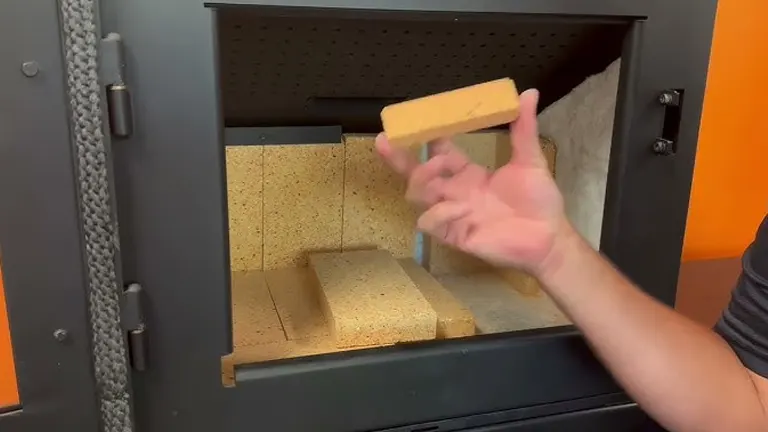
When selecting fire bricks, consider the following:
- Stove Compatibility Not all fire bricks are created equal, and not all will fit your wood stove. Measure the interior dimensions of your stove’s firebox carefully and compare these with the size of the bricks you’re considering. A proper fit is essential to ensure there are no gaps that can allow for excess heat to escape or damage to occur. Additionally, check if your stove manufacturer recommends or supplies specific bricks tailored to your model, which can take a lot of the guesswork out of this process.
- Temperature Range While it might seem like the highest temperature rating is the best choice, it’s not always necessary to go for the highest-rated fire bricks for wood stove applications. Most residential wood stoves will operate well within the temperature thresholds of standard fire bricks. However, if you have a high-efficiency stove that reaches particularly high temperatures or if you use your stove continuously, you may need bricks rated for higher temperatures.
- Budget Considerations While the cost is an important factor, consider it alongside the longevity and heat retention properties of the bricks. Standard fire bricks may be more cost-effective upfront but think about the long-term use of your stove. If your stove is in constant use, it might be worth investing in higher-quality bricks that could last longer and ultimately save you money on replacements. On the other hand, for occasional use, standard bricks may suffice.
- Quality and Durability In addition to the budget, the quality and durability of the fire bricks should not be overlooked. High-quality bricks may have a higher upfront cost, but their durability can make them more cost-effective over time, as they may not need to be replaced as often. This can also reduce the maintenance needs of your wood stove, providing peace of mind and a safer heating solution.
When making your selection, it is also worth considering the type of wood you burn and the stove’s burn rate, as these factors can also influence the wear and tear on your fire bricks.
By considering these factors carefully, you can make an informed decision on the right fire bricks for your wood stove, ensuring efficient, safe, and long-lasting heat for your home.
Conclusion
Fire bricks are a crucial element in the design and operation of a wood stove. They elevate the stove’s performance, extend its lifespan, and contribute to a safer, more efficient heating process. When selecting a wood stove, consider the quality and design of the fire brick lining, as it is as important as the stove’s outer construction. Properly maintained, a fire-brick-lined wood stove can provide warmth and comfort for many years, making it an investment worth nurturing.
Whether you’re installing a new stove or maintaining an existing one, understanding the role of fire bricks can help you get the most out of your wood stove, both in heat output and longevity. Remember, when it comes to wood stoves, what’s on the inside counts just as much as the outside.
FAQs
- Can I use regular bricks instead of fire bricks for my wood stove?
Regular bricks are not designed to withstand the high temperatures inside a wood stove and may crack or break, posing a safety hazard. Fire bricks are specially formulated to handle extreme heat and are the only safe option for lining a wood stove. - How can I tell if my fire bricks need replacing?
Fire bricks should be checked regularly for signs of extensive wear or damage, such as deep cracks, crumbling, or significant erosion. If they can no longer provide a flat, stable surface, or if they’re damaged to the point where the stove’s metal is exposed to intense heat, they should be replaced. - Are there eco-friendly fire bricks available?
Yes, some manufacturers produce fire bricks using recycled materials or sustainable manufacturing processes. These bricks offer an eco-friendly alternative while still providing the necessary heat resistance. - Do fire bricks come in different colors, or are they always the standard beige or brown?
While the traditional color of fire bricks is in the beige to brown spectrum due to the natural materials used, some manufacturers may offer them in other colors using ceramic stains or dyes. However, the color does not affect the performance of the brick. - Can fire bricks be used to improve the efficiency of an older wood stove?
Absolutely. Lining an older wood stove with new fire bricks can improve its efficiency by ensuring better heat retention and distribution. It’s a relatively simple upgrade that can extend the life of the stove and improve its performance. - How do the properties of fire bricks change under continuous high heat?
Over time, fire bricks can become more vitrified, meaning they undergo a process of becoming like glass, which may alter their thermal properties. While this can make them even more durable against heat, it might also make them more brittle. - Can fire bricks be cut to fit custom-designed wood stoves?
Yes, fire bricks can be cut to size with a masonry saw or tile cutter. It’s important to wear appropriate safety gear when cutting fire bricks, as the process generates silica dust, which is hazardous to inhale. - Are there any innovations in fire bricks for wood stoves?
The industry is continuously innovating, with some companies developing fire bricks that have improved heat reflection properties or that are composed of advanced materials for longer life and better heat management. - Q: How do I dispose of old fire bricks?
Old fire bricks should be disposed of according to local regulations. Often, they can be recycled or repurposed for outdoor fire pits, landscaping, or in the creation of masonry heaters. - Q: Does the pattern of laying fire bricks within a wood stove affect its performance?
Yes, the brick-laying pattern can influence air flow and heat distribution within the stove. Some patterns may promote better combustion and efficiency, so it’s worth consulting with a professional or the stove manufacturer for recommendations.
Got questions or your own tips on using fire bricks in your wood stove? Share your experiences in the comments below! We’re always excited to learn from each other and make our wood stove usage as efficient and safe as possible.

David Murray
Forestry AuthorI'm David Murry, a forestry equipment specialist with a focus on chainsaw operation. With over 13 years of experience, I've honed my skills in operating and maintaining a wide range of machinery, from chainsaws to log splitters. My passion for the outdoors and commitment to sustainable forestry drive my work, which emphasizes safety, efficiency, and staying updated with industry advancements. Additionally, I'm dedicated to sharing my expertise and promoting environmental awareness within the forestry community.









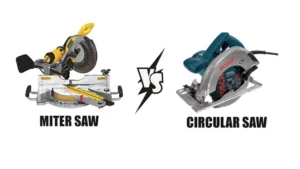


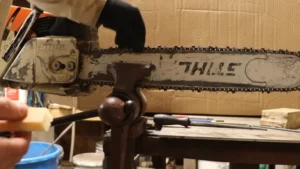

I've owned a Lovenholm Mk2 multi-fuel stove for a number of years. The original, ribbed bricks are showing signs of serious wear. Where can I obtain replacement, ribbed bricks? All I can find is the relatively soft, unribbed copies. Is there a good reason why I cannot source original type replacements?
Sandy Robey
September 15, 2024 8:33 am